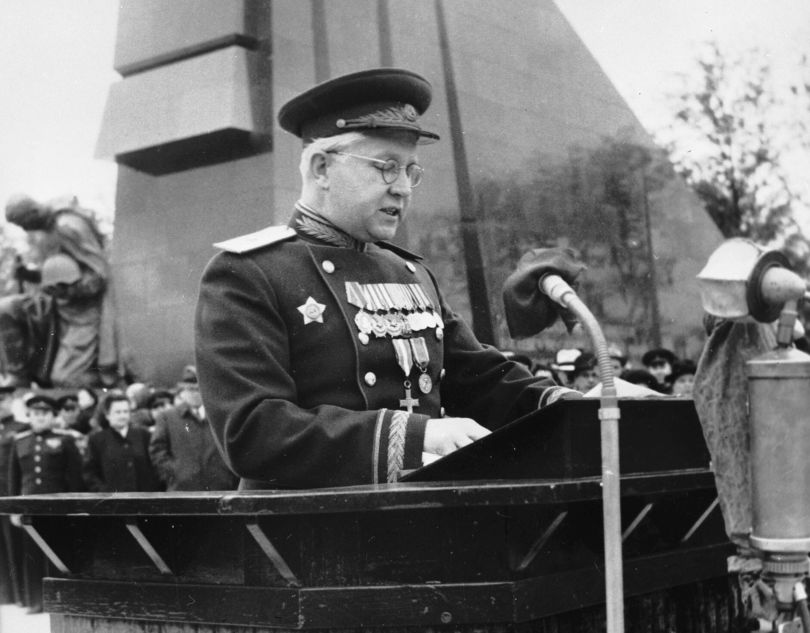On 15 April 1946, the Soviet Military Administration in Germany (SMAG) issued an order “On the construction of special cemeteries for USSR citizens (military and civilians) in the Soviet Zone of Germany”.
After the last months of the war, as a result of hard fighting, there were many wounded, sick and weakened people in the Soviet military units on the territory of Germany. In the first months of peace, burials were carried out in ordinary city cemeteries and gravesites were carefully documented.
From 15 April Soviet garrison cemeteries began to open throughout East Germany. The remains of the dead soldiers, former Soviet prisoners of war and civilians who had been brought for forced labour, were transferred there.
The most famous Soviet cemeteries in Germany also included memorials, such as the Berlin cemeteries in Treptower Park, on the Küstrinerstrasse in the Alt-Hohenschönhausen district and in the Tiergarten. The cemetery in Treptower Park is famous for the monument to the Soviet Soldier-Liberator by sculptor Yevgeny Vuchetich.
As a result of the First and Second World Wars, there were more than 4 thousand burial places in Germany, where, according to official estimates, over 650 thousand Russian and Soviet citizens were buried. Some mass graves still have not been found, and among those that have been, not all have a list of the names of those buried.
Source:
Helga Köpstein "Soviet Monuments in Berlin"
























